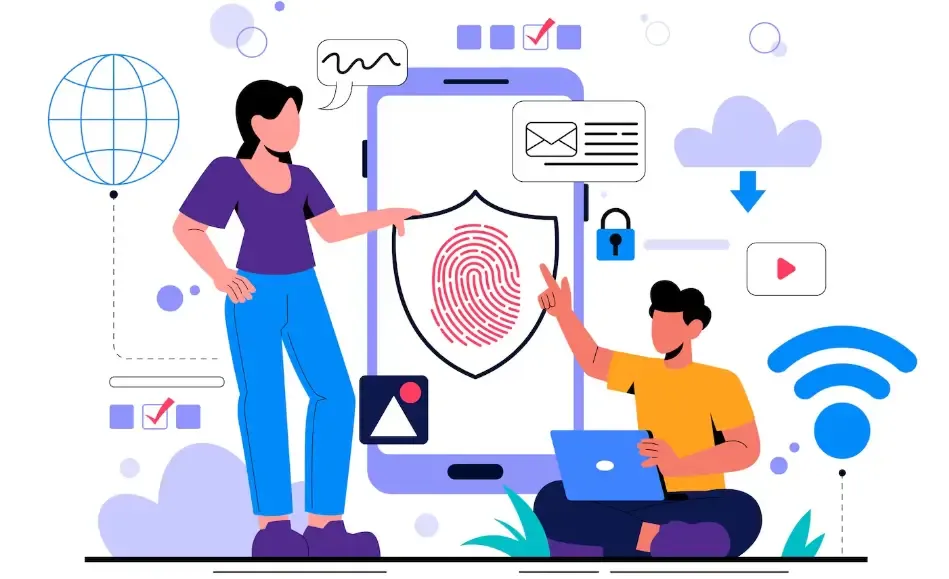How to Integrate Mobile Browser Fingerprints Across App and Web?
When it comes to user identification and risk control against cheating, many people's first reaction may be cookies, device IDs, or login information.
However, as privacy protection becomes stricter, cookies are often disabled or cleared, and browser fingerprinting technology is receiving increasing attention.
Among them, mobile browser fingerprint detection has garnered significant attention. Many people are not very familiar with it and don't know how to effectively utilize this "smart" technology. Next, let me provide you with a detailed introduction.

One,Browser fingerprinting detectionWhat is it?
In simple terms, browser fingerprinting is like taking a "unique ID photo" for each device.
It does not directly read privacy data, but instead analyzes hundreds of parameters such as browser version, screen resolution, fonts, plugins, system language, GPU model, time zone, and generates a unique identifier through algorithms.
For example, when you open a website, the system automatically detects the parameter combination of your device in the background, and the calculated hash value is your "browser fingerprint."
Next time you come again, even if you switched networks, as soon as the fingerprint is compared, the system will immediately know who you are.
II. The Special Aspects of Fingerprint Detection on Mobile Devices
Many people think that browser fingerprinting only applies to desktop computers, but in fact, mobile fingerprinting is the key focus now.
After all, most of our traffic now comes from mobile devices, whether it's from the WeChat built-in browser, Safari, Chrome, or the WebView within apps, they can all perform fingerprint recognition.
The challenge of fingerprint detection on mobile devices lies in the complexity of the device environment.
There are many Android models with significant system customization, resulting in large differences in the WebView environment across different brands. Coupled with iOS's privacy restrictions, accurately identifying the same device is not easy.
At this time, some professional detection solutions become particularly important, such as device fingerprinting services like ToDetect.
It can perform recognition on both App and Web ends, comprehensively judging user identity through algorithm models, significantly improving detection accuracy and stability.
The integration strategy of App + Web is the key.
In the past, many companies only focused on single-end identification, such as deploying browser fingerprint detection only on the website side.
But now the user's habits have already been established:
May first browse in the app and then switch to the web to place an order.
You can either register on H5 first and then download the app to log in.
If the fingerprint system between the two environments is fragmented, risk control, marketing, and user profiling will be affected.
Therefore, the more mainstream approach now is—integrated fingerprint detection strategy for App + Web.
ToDetect can synchronously generate fingerprints in the App SDK and Web JS, achieving "cross-end identification" through encrypted association.
Regardless of which端the user accesses, the backend can determine whether it is the same device, thus:
Effectively prevent multiple account logins and fake registrations;
Identify anomalous access or batch operations;
Optimize advertising targeting accuracy.
Assist in risk control decision-making and anti-cheating systems.
Four.Mobile browser fingerprint detectionapplication scenarios
Anti-cheating system: detecting behaviors such as "sheep" (users taking advantage of promotions), fake transactions, coupon abuse, and false registrations.
Financial risk control: Banks, lending, and insurance platforms use to identify high-risk devices.
Advertising Placement: Prevent Ad Click Fraud and Enhance ROI.
Account security: Identify devices with unusual logins and frequent account switching.
Many large enterprises have quietly deployed such identification logic behind the scenes, but users are simply unaware of it.
5. Privacy and Compliance Issues to Consider
Of course, the most important point in fingerprint detection is compliance.
Browser fingerprinting does not mean collecting personal privacy; its principle is to generate a fingerprint code using publicly available device feature information, and it does not involve personal identity information.
Please pay attention to the following points:
Inform the user of the data usage.
Do not collect private fields.
Do not make illegal associations with other data.
ToDetect complies with privacy regulations by using anonymization and encrypted transmission to ensure security.
Summary: A smarter and more integrated future.
The future is not just about simply comparing parameters, but about judging user behavior characteristics through models, such as scrolling rhythm, clicking paths, and visit duration.
For enterprises, the integration strategy of mobile fingerprint detection App/Web is no longer just a "technology upgrade," but a core link for business growth and security assurance.
Whoever can connect multi-end data and accurately identify devices will have an advantage in risk control and user insights.



